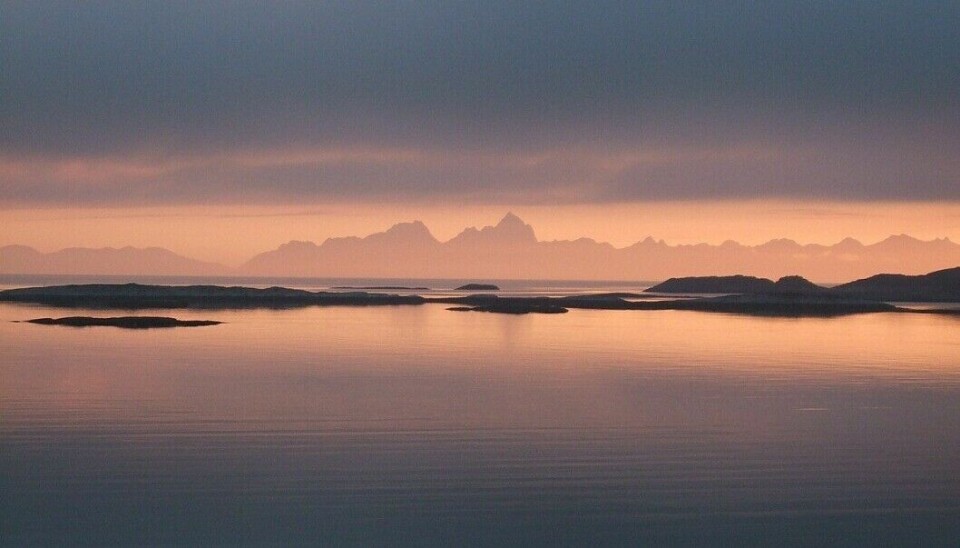
Researchers and the media need to stop crying ‘wolf’ about the Gulf Stream
There are many, many things we should worry about when it comes to global warming. But worrying that the Gulf Stream will stop is not one of them, says one Norwegian oceanographer.
Lars H. Smedsrud is a professor at the Geophysical Institute at the University of Bergen.
Together with his colleagues he has summarized what researchers know about the development of the Gulf Stream over a period of more than a hundred years.
Smedsrud has a clear message: There is no need to worry.
More and more water flows past Norway
A large branch of the Gulf Stream passes between Scotland and Iceland, and into the Norwegian Sea.
From here, this branch continues up the coast of Norway and further north to the Barents Sea and the Arctic.
This large branch, called the North Atlantic Drift, shows no signs of weakening.
Since 1900, the amount of water in this part of the Gulf Stream has actually increased quite a bit, Smedsrud says.
Surprised by the results
The Bergen professor was surprised at how clearly and consistently his group’s compilation of research results showed a fairly steady increase in the inflow of water from the south.

In the last 25 years, this increase has stopped. For a quarter of a century now, the amount of water in 'the Norwegian' part of the Gulf Stream has been fairly stable.
It goes without saying that the amount of water in this ‘Norwegian’ branch of the Gulf Stream can vary somewhat between individual years.
10 sverdrups of water
The large branch of the Gulf Stream, which passes over a shallow ridge between Scotland and Iceland and flows further up into Norwegian waters, carries about 10 sverdrups of water.
The international unit for measuring the amount of water in an ocean current is named after the Norwegian oceanographer Harald Ulrik Sverdrup (1888-1957).
One sverdrup is equivalent to one million cubic metres of water every second.
When the Gulf Stream passes the latitude of New York, it is at its largest — around 30 sverdrups. About a third of all the water in this main stream thus flows into the Norwegian Sea.
The researchers found that the warm ocean current that reaches Norway’s latitude releases as much as 60 per cent of its heat in the Norwegian Sea. Only 30 per cent is released in the Barents Sea and only 10 per cent of the heat is released in the Arctic.
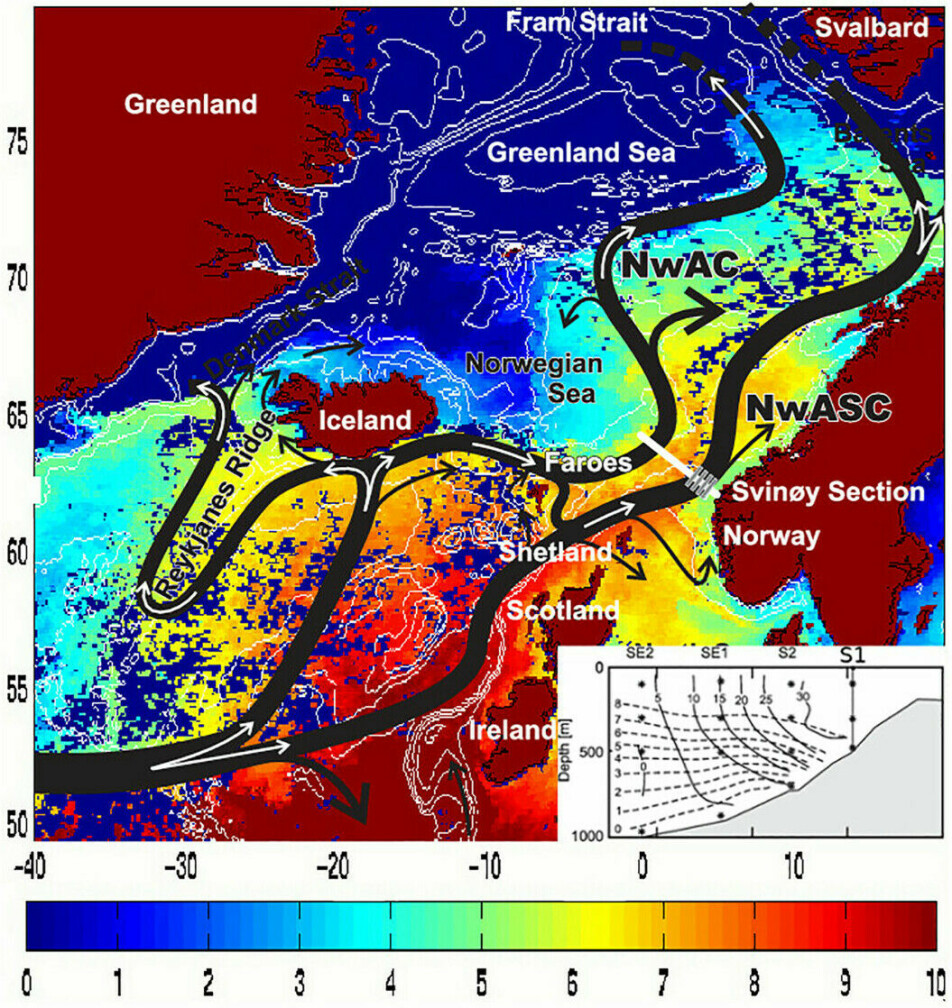
May be somewhat weaker
“The Gulf Stream may be somewhat weaker again in the future,” Smedsrud said to sciencenorway.no.
“But that does not mean that there will be less heat transport by the Gulf Stream,” he said.
Smedsrud is focused on heat transport, which is what people really care about when it comes to the Gulf Stream.
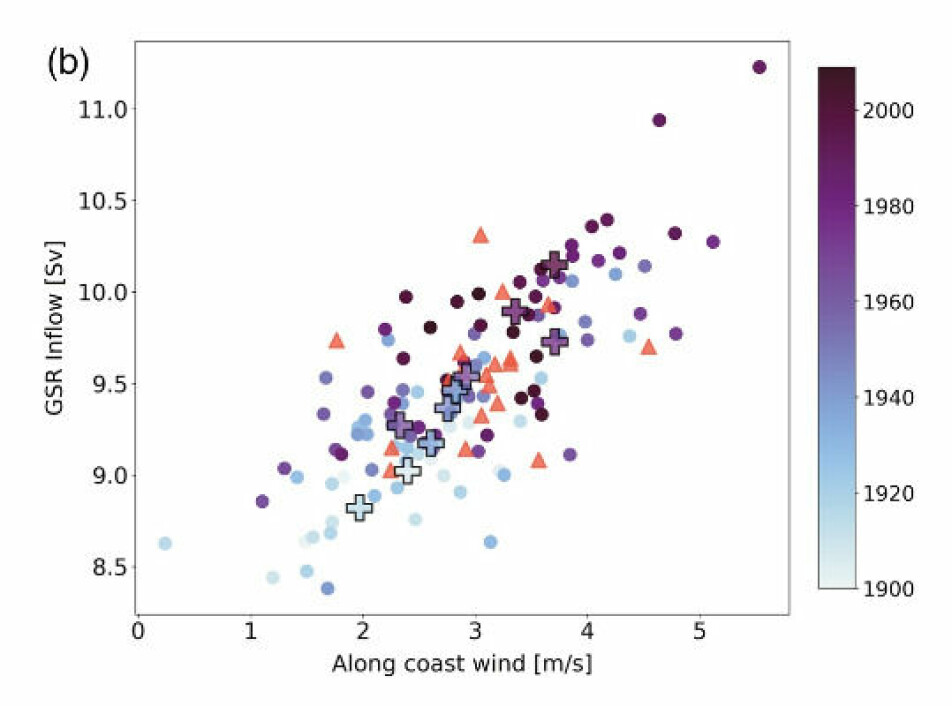
Dramatic articles in Nature
Smedsrud, who is a professor at the Bjerknes Centre for Climate Research at the University of Bergen, told sciencenorway.no that researchers who have warned that the Gulf Stream may collapse in dramatic terms are in a clear minority among the experts in the field.
“Nevertheless, they have been given a lot of attention, both in well-known scientific journals and in the media,” he said. “This in turn creates interest in their research, and with increased interest may come more money for research.”
Smedsrud said the German marine scientist Stefan Rahmstorf at the University of Potsdam in Germany was perhaps the foremost source of the frightening stories about the Gulf Stream.
Rahmstorf and his co-researchers' articles have been published several times in the journal Nature.
You can read their latest research article here. These alarming reports about the Gulf Stream have found their way to the newspaper The Guardian and a number of other media.
Stefan Rahmstorf's marine research has also been taken up in Norway, including in an article in Aftenposten, a national newspaper, about the Opera House in Oslo being built too close to the sea surface.
Will the Gulf Stream collapse in the year 2100?
The same researchers warn on the website LiveScience about a collapse (‘tipping point’) in the Gulf Stream around the year 2100 — or in just under 80 years.
“This is very speculative as research. I would go so far as to call it unrealistic,” Smedsrud said.
He emphasizes that there is every good reason to take global warming seriously.
At the same time, Smedsrud says he fears that if researchers, well-known scientific journals and the media cry ‘wolf’, and report empty concerns about something as crucial as the Gulf Stream, it could undermine society’s commitment to other things that are important now, as the climate warms.
Argumentation that does not hold
In one of their Nature articles, Rahmstorf and his colleagues analysed the remains of marine life found in seabed sediments in the Atlantic Ocean as evidence of the weakening of the Gulf Stream. Ice cores from Greenland were also cited in their argument.
The conclusion is that the Gulf Stream has weakened over a period of 1600 years.
The weakening has been particularly strong during the years of human-induced global warming, especially during the last 50 years.
“We researchers have no measurements of how strong the Gulf Stream has been during the last 1600 years. It’s therefore difficult for us to comment on this,” Smedsrud said.
“Counting zooplankton residues in sediments on the seabed, as these researchers have done, gives us a good estimate of sea temperature,” he said.
But that says nothing about the strength of the ocean current, Smedsrud said.
“When temperature is used to calculate the strength of an ocean current, one needs to make many assumptions. It’s a pretty big leap. It leaves individuals who study something like the Gulf Stream having to use models that to a very small degree can be verified by measurements,” he said.
Ice cores as an argument
Ice cores from the inland ice in Greenland show that the climate has both cooled and warmed rapidly in the past.
“But to use something that has happened during the ice ages a very long time ago to say that something will certainly happen again also requires a pretty big leap,” Smedsrud said to sciencenorway.no. “Unfortunately, this is the logic of these Nature articles that get so much attention.”
He emphasizes that the measurements that have been made are good. It’s the interpretation that he thinks is wrong.
The Gulf Stream has become stronger
Smedsrud and his colleagues at the Bjerknes Centre for Climate Research in Bergen have, as mentioned, summarized Norwegian and international research on the development of the Gulf Stream from the year 1900 until today.
They see that the warm water flowing to the Nordic seas from the Caribbean steadily increased in both temperature and volume over a long period.
Stronger winds across the Atlantic have pushed more water north. Years with less wind will have weaker ocean currents.
This is one of the study’s important findings.
The increase in volume has in turn led to an increase in heat transport up to the Norwegian Sea by as much as 30 per cent.
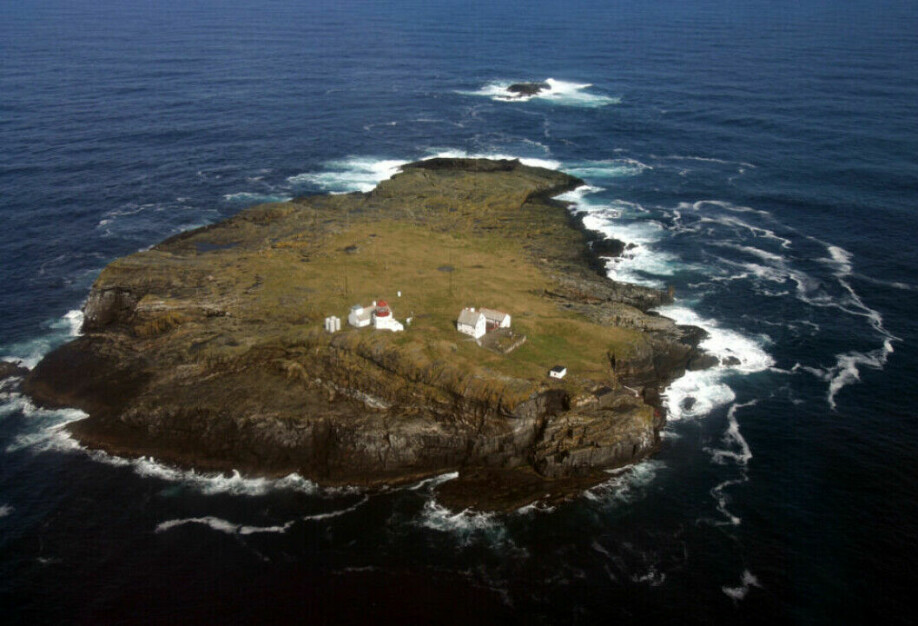

May be somewhat weakened
With even more global warming, Smedsrud recognizes that the Gulf Stream may be somewhat weakened in the future.
“Further reduced Arctic sea-ice cover, or a complete loss in the summer, will lead to increased heat loss from the sea. This will increase cooling of the ocean in the future and thus help drive a greater inflow,” he said.
“But what will really be able to reduce the Gulf Stream is more melting, for example in Greenland. Then fresher water masses will be formed in the sea off the coast of East Greenland, and it will be more difficult for dense salty water to form in this area. This is how part of the Gulf Stream’s ‘engine’ could be weakened somewhat,” he said.
“But this will not result in the total collapse in the Gulf Stream!”

Why Norway is warmer than Greenland
Norway is located at approximately the same latitude as the southern part of Greenland.
The temperature difference between the two regions is still very large. Norway is much warmer than Greenland.
“Some people are worried that Norway will get as cold as Greenland. But something like that is completely unrealistic,” Smedsrud said.
“As long as the Earth continues to rotate, and the Sun continues to shine, it will help maintain heat transport through the ocean from southern latitudes and up to us in Northern Europe,” he said.
“Once this same water is chilled in the Arctic, it will flow south again along East Greenland and contribute to Greenland being cold,” he added. “And it will continue to be this way.”
A worst-case scenario
What Stefan Rahmstorf and his colleagues have described is clearly beyond an absolute worst-case scenario, Smedsrud said.
“If all the sea ice in the Arctic melts in the summer and the inland ice in Greenland melts to a large extent, it will contribute to colder fresh water in the north and thus less deep-water formation. The Gulf Stream will also slow down,” he said.
Smedsrud said all this fresh water will reduce the amount of water carried by the ocean current by a maximum of about 25 per cent.
“The remaining 75 per cent will still be driven by the wind and the supply of fresh water to the Arctic Ocean,” he said.
And the heat transport north with the Gulf Stream will not be reduced by more than about half of this again, or around 12 per cent. This is because the temperature of the Earth will continue to rise.
“It's this that is the absolute worst-case scenario,” Smedsrud said.
Norway will be fine
Norway will easily handle any changes that result from changes in Gulf Stream dynamics, he said. Like other countries, Norway will experience the increasing effects of global warming.
If there were to be a little less heat transport with the Gulf Stream, it wouldn’t cause many problems for Norway, at least compared to the effects of global warming.
“We should be more worried about how hot it might become for people who live further south on the planet,” Smedsrud said.
“What we can be absolutely certain will not happen is that the Gulf Stream stops and that the ocean current stops releasing heat to the Norwegian Sea,” he said.
Stefan Rahmstorf replies
Sciencenorway.no contacted the marine scientist Stefan Rahmstorf at the University of Potsdam for a response to Smedsrud’s critique of his research findings.
“I think Smedsrud’s critique is based on a number of misunderstandings and I do not see any contradiction or inconsistency between our work and that of Smedsrud and colleagues,” Rahmstorf said to sciencenorway.no in an email.
He says it is critical to distinguish between several concepts in any study of the Gulf Stream.

“What we have been studying is the AMOC or the Atlantic Meridional Overturning Circulation. This is not the same as the Gulf Stream,” he said.
AMOC relates to heat transport in the Atlantic Ocean’s great ocean currents.
Vocabulary can be confusing
Rahmstorf says he is aware that the AMOC and the Gulf Stream are terms that are often used interchangeably, and that the wording is not ideal and can perhaps lead to confusion.
“The AMOC, at least as we discuss it, is also not the same as the overflow between Atlantic and Nordic Seas but rather specifically the vertical overturning in the Atlantic only, as measured in (our) RAPID project. The results we obtained in our Nature study (Caesar et al. 2018) suggests that the AMOC and the Nordic Sea overflow may be anticorrelated.”
“I fully agree that the Gulf Stream itself will never collapse since it is largely wind-driven and the winds will not cease to blow; it is only the thermohaline driven AMOC which has a risk of breaking down, as famous oceanographer Henry Stommel showed in 1961 and as paleoclimatic data show repeatedly happened in Earth's history.”
Three striking changes
Rahmstorf refers to what he says are three striking changes in the AMOC.
- A cold spot that has been observed in the sea south of Greenland, which he and his colleagues interpret as a weakening of the AMOC.
- Strong warming along the coast of North America, which may also be linked to an AMOC weakening.
- Strong warming in the Norwegian Sea, which he interprets as a result of an intensified flow of Atlantic water into the Norwegian Sea, as Smedsrud and colleagues have also found.
In their 2018 article, Rahmstorf and colleagues conclude that the AMOC may have weakened by about 3 sverdrups — or around 15 per cent — since the middle of the last century. According to these researchers, AMOC is now at a record low level, also from the perspective of a millennium. The researchers also see a connection between the cold spot south of Greenland and the heat waves of Europe in recent years.
Proxy data from the past
A proxy is something that can represent a measurement we want to make but are unable to measure directly. In this case, fossils from the past can tell us about something about how warm it was in the ocean in the past.
“In our recent Nature Geoscience paper (Caesar et al. 2021) we have not in fact collected or interpreted any paleoclimatic proxy data. What we did was to compile a number of previously published paleoclimatic data series, which their authors (different research groups) have interpreted as proxies for AMOC strength,” Rahmstorf wrote in the email.
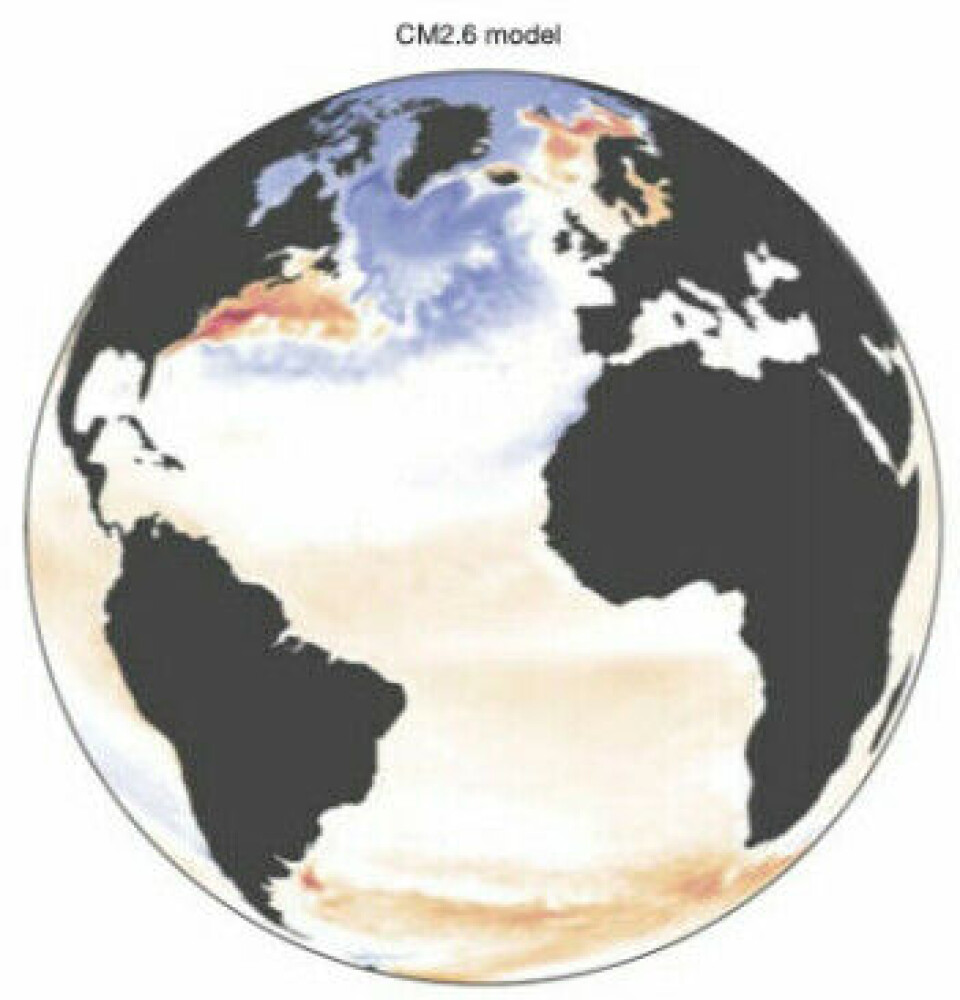
Rahmstorf points out that several different paleoclimatic proxy series that use different methods and approaches come to consistent and robust results. These point in the direction that the AMOC in our time has weakened in a way that is unparalleled for at least a thousand years.
“This is statistically significant (as evaluated by a professional statistician) in 9 of the 11 proxy data series we investigated,” Rahmstorf wrote in his email to sciencenorway.no.
Not just a minority
Rahmstorf believes it is wrong to say that only a minority of researchers in the field share his and his colleagues’ views.
“I have never predicted that the AMOC will shut down by 2100, but rather have always considered this as a risk that is small but should not be ignored given the large impact this would have. (Would you board a plane that has a 1% chance of crashing?) That this risk exists is by no means a minority view.”
Rahmstorf points out that the IPCC, the Intergovernmental Panel on Climate Change, concluded in its latest assessment that it is very unlikely that the AMOC will go through an abrupt transition.
But ‘very unlikely’ refers to a probability of less than 10 per cent. Had the IPCC found that the risk was below 5 per cent, the climate panel would have called it ‘extremely unlikely’, in IPCC language, he said.
“My point has always been that to me this does not mean "nothing to worry" but 5-10 % implies a very serious risk. Only recently - since the publication by Boers 2021 - have I started to worry that this tipping point may be closer than I previously thought, so perhaps the IPCC even underestimates this risk,” Rahmstorf said.
Rahmstorf adds that he never received any project money for researching the AMOC and rejects the insinuation that this might motivate his assessment of the topic.
Translated by Nancy Bazilchuk
This article was updated on 31 May at 14:10 in order to change a few mistakes made in translating the article from Norwegian to English.
References:
Lars H. Smedsrud et.al.: Nordic Seas Heat Loss, Atlantic Inflow, and Arctic Sea Ice Cover Over the Last Century. Reviews of Geophysics, 2021.
Kjell Arild Orvik: Long-Term Moored Current and Temperature Measurements of the Atlantic Inflow Into the Nordic Seas in the Norwegian Atlantic Current; 1995–2020. Geophysical Research Letters, 2022.
L. Caesar, S. Rahmstorf, etal.: Current Atlantic Meridional Overturning Circulation weakest in last millennium. Nature Geoscience, 2021. (Summary)
L. Caesar, S. Rahmstorf et.al.: Observed fingerprint of a weakening Atlantic Ocean overturning circulation. Nature, 2018.
———
Read the Norwegian version of this article at forskning.no
































